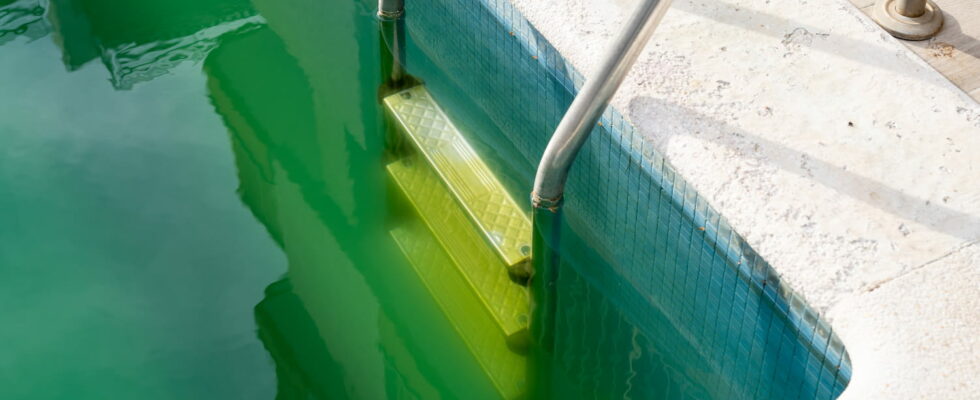There’s nothing more unpleasant than discovering that your pool water has turned green, a sign of algae blooms. Here are the right steps to take to ensure clear water all summer long.
Summer is here and there is nothing more pleasant than diving into a fresh and clean pool. However, a common problem for pool owners, or for holidaymakers who enjoy them for two weeks a year, is the appearance of water that has turned green, often due to algae proliferation. To avoid this problem, there is a foolproof method that guarantees clear and crystalline water throughout the summer season: the combined use of stabilised chlorine and regular preventive treatments.
Green water in a swimming pool is usually caused by algae. These microorganisms grow quickly in stagnant water, especially when temperatures rise and chlorine levels are low. Algae not only make the water unsightly, but they can also cause health problems and damage pool equipment.
The key to avoiding green water is based on two main pillars: stabilized chlorine and rigorous maintenance. Stabilized chlorine contains cyanuric acid, which protects the chlorine from degradation by the sun’s UV rays. This allows the chlorine to remain active in the water longer, ensuring continuous disinfection. Add stabilized chlorine in tablet or granular form. Place the tablets in a skimmer, floating dispenser, or automatic chlorinator for a slow, steady release.

Check the chlorine, pH and alkalinity levels in your water regularly using test strips or a test kit. Chlorine should be between 1 and 3 ppm (parts per million). The pH should be maintained between 7.2 and 7.6 for chlorine to be effective. Correct any imbalance immediately using specific products (e.g. pH reducer or increaser).
On the other hand, cleaning and filtering are important. Run the filter pump at least 8 to 12 hours a day to ensure adequate water circulation. Also, clean the filter regularly to prevent the accumulation of debris that could promote algae growth. Finally, vacuum the pool and brush the walls and bottom to remove potential deposits and algae. However, if the water begins to show signs of cloudiness or green coloring, perform a shock treatment with unstabilized chlorine to quickly eliminate algae.
As a preventative measure, during periods of high use or intense heat, increase the frequency of testing and add additional chlorine if necessary. You can also use specially formulated preventative algaecides to prevent algae growth. When the pool is not in use, cover it to reduce exposure to debris and UV rays.
